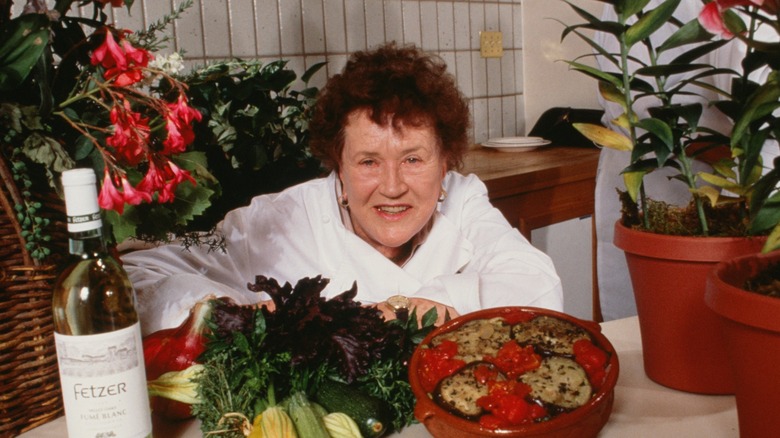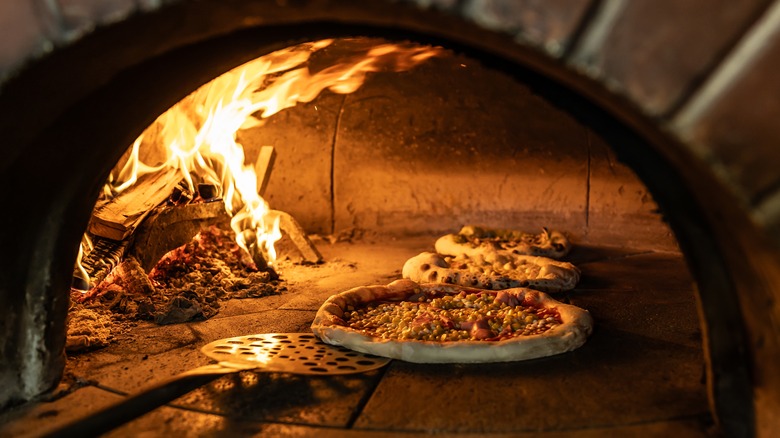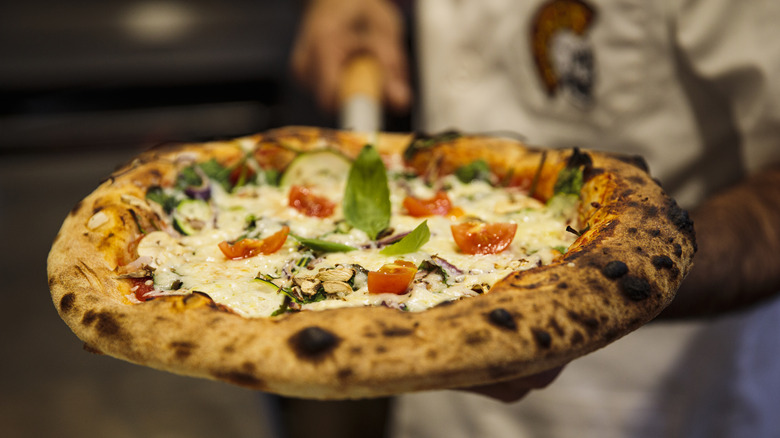Julia Child's Trick To DIY A Pizza Oven Is Genius
Julia Child is a beloved figure among many food enthusiasts for bringing both French cuisine and modern cooking shows to the masses. She also made the complex seem very simple in a way that led her loyal fans to believe that they could cook like Child at home. So, it comes as no surprise that she gave us this easy DIY trick to turn our home kitchens into a pizzeria (via Facebook).
By adding fire bricks directly to your oven grate, you create the perfect surface to cook a flawless crispy pizza crust. Pizza ovens are different from conventional ovens in that they rely on extremely high heat, typically 700 to 800 degrees Fahrenheit for optimal cooking, and have a brick, clay, or ceramic surface to retain heat. This surface is what gives the dough its signature crusty bottom while allowing for even cooking, and the high temperature cooks the crust quickly to avoid sogginess from the toppings.
Why firebricks make the best pizza ovens
While Julia Child suggests using either quarry tiles or firebricks for creating your home pizza oven, it is firebricks that have the best results for pizza making. Quarry bricks may be able to stand up to the high temperatures required, but they are not approved by the FDA as a direct cooking surface. Firebricks provide optimal conditions for pizza making. Along with a great dough recipe, the combination of heat retention and even distribution they give is the key to a consistent crust.
For most city dwellers or anyone whose storage space is at a premium, there are certain restraints that go into planning your pizza oven. Fortunately, firebricks are relatively inexpensive and can be purchased at most hardware stores or online. Plus, they are not prohibitively large or heavy (typically 4.5 by 9 by 1.25 inches). Once you measure your oven grate, you can easily figure out just how many bricks you will need. The only thing left to do is to start building your pizza oven a la Child's suggestions.
Making pizza at home
Making pizza at home should be fun and relatively easy. If you don't want to buy and store firebricks, that's okay. There are certainly other options that will provide similar results. A pizza stone is one alternative to firebricks and mimics the qualities of heat retention and even distribution. Stones can often come with higher price tags than bricks but will give you similar results in your conventional oven.
If New York's thin-crust pizza isn't what you're in the mood for, you can break out your cast iron, and start loading up on toppings with a Chicago-style deep dish. With just a few tips and tricks to making a deep dish pizza at home, you will end up with an equally crispy crust — but with way more meaty cheesy goodness inside.
Another great thing about pizza ovens is their versatility. Whether using a pizza stone or firebricks, we know that thin crispy dough is easily achievable, so something like a homemade sausage calzone may certainly also be on the menu. Varying temperatures also make your pizza oven a great way to start off your meal with a variety of hot dips that are the perfect accompaniment to appetizers.



